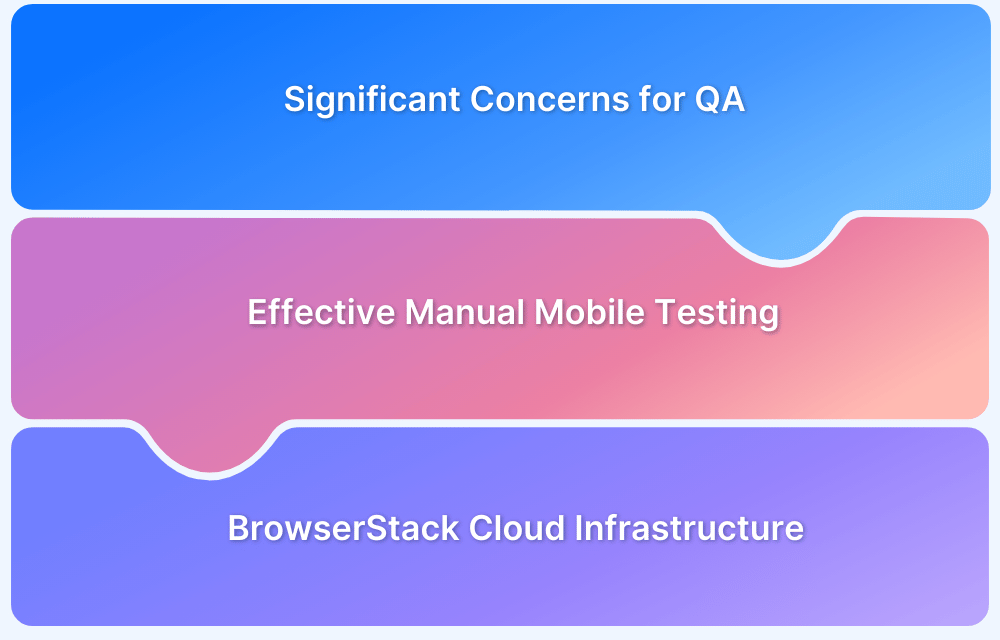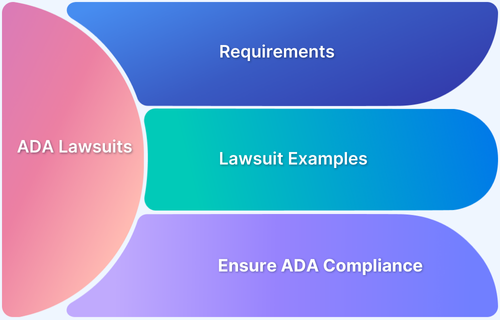Key Challenges in Mobile Testing
By Jash Unadkat, Technical Content Writer at BrowserStack - April 21, 2020
Mobile devices have become an inseparable part of our lives. Millions of people are completely dependent on mobile devices for social networking and communication. Mobile applications have also changed the way we shop, book tickets, pay bills seamlessly, and conduct day to day activity. As a result, the usage of mobile phones continues to grow at a rapid pace.
The constant endeavor of organizations to provide creative solutions to real-world problems has led to the digital space being flooded with mobile apps. Naturally, market competition has created multiple challenges for QA teams when it comes to testing these applications fast, to enable on-time release. While doing so, teams want to ensure that the release is bug-free.
With end-user experience being the topmost priority, let’s explore four major challenges in mobile testing faced by teams.
- Delivering robust apps for seamless user experience
It is obvious that end-user experience plays a critical role in the success of any mobile application. The first impression is the last impression. This quote is closely applicable to mobile apps released for the first time in the market. There’s a high probability that a user may find it difficult to access the key features of the app or might face a bug in the key functionality itself.
Let’s consider an e-wallet, for example. If a user is not able to proceed after clicking on the Add money button, then the user might simply quit the app and move on to another one. It is vital for teams to deliver rock-solid apps that helps user meet their requirements. Flawless user experience always has a direct impact on the business. Given this, teams should leave no stones unturned in ensuring the apps are bug-free.
- Delivering faster in a competitive landscape
The current scenario is highly competitive, as every firm is trying to address real-world problems by creating handy mobile apps. The app that delivers a stable and robust solution before anyone else dominates the market. Competition among the tech firms to maintain the edge has brought a whole new set of challenges to the testing world.
QA teams now face the pressure of delivering stable releases in ever-shortening timelines. These strict deadlines might impact the mobile app testing process as it requires considerable requirement planning, designing, development, and extensive testing. As a result, QAs need to be well prepared with the test plan well in advance.
- Insufficient access to multiple mobile devices
The mobile industry is highly fragmented with multiple mobile devices, each having unique configurations. Users access apps from mobile devices operating on Android or iOS or other players. Testers need to test their apps on a variety of mobile devices as per the market trends.
At times, it is possible that one or more QAs might need access to the same mobile device at once for testing purposes. In such a case, either of them needs to wait for the other teammate to finish their tests. As a result, teams need access to an extensive set of devices to ensure they test their apps comprehensively.
- Maintaining On-premise device labs
As the market trends evolve with time, organizations need to ensure that their on-premise device labs are upgraded at regular intervals. This is because teams need to ensure that their applications are thoroughly tested and optimized enough for working flawlessly on the latest devices.
Maintaining an on-premise device lab involves activities such as purchasing new mobile devices, updating the software of existing devices, security checks, etc. Maintaining on-premise device labs involves huge investment. Small organizations can not afford such huge expenditure.
What is the Solution for Mobile Testing Challenges?
An ideal way for QA teams to address the challenges described above is to shift their test infrastructure to the cloud. Teams can prefer cloud-based platforms like BrowserStack to test their web and mobile applications on 2000+ real devices and browsers. QAs can perform both manual and automated tests on real Android and iOS devices.
Try Testing on Real Device Cloud for Free
Teams do not need to worry about maintaining any devices. QAs just need to upload the app from their computers and choose the desired device to test on. Teams can choose from a variety of mobile devices from several vendors like Samsung, OnePlus, Motorola, Pixel, Apple, and others. The image below represents a sample manual testing session of an app on Google Pixel 4.
Additionally, BrowserStack also provides the following features:
- Instant access to DevTools within test sessions
- Geolocation testing to test app behavior in different geographies
- Simulating various network conditions using Throttle Network feature
- Integrations with bug reporting tools like Jira, Trello, and Slack
- Uploading of apps directly from the App Store or Play Store.
Teams can streamline their test cycles by opting for cloud-based test infrastructure that enables them to focus all their time and resources on the development and release of flawless products in record time.




